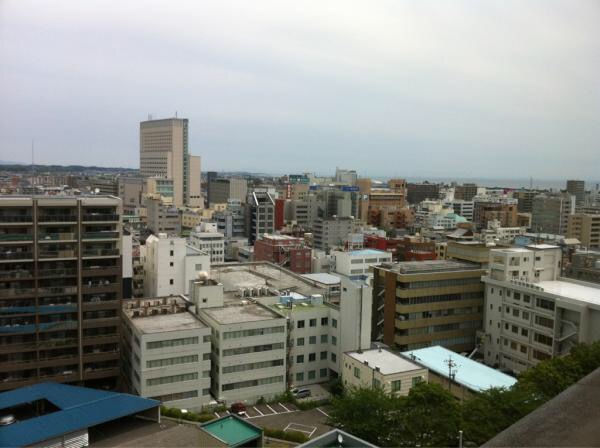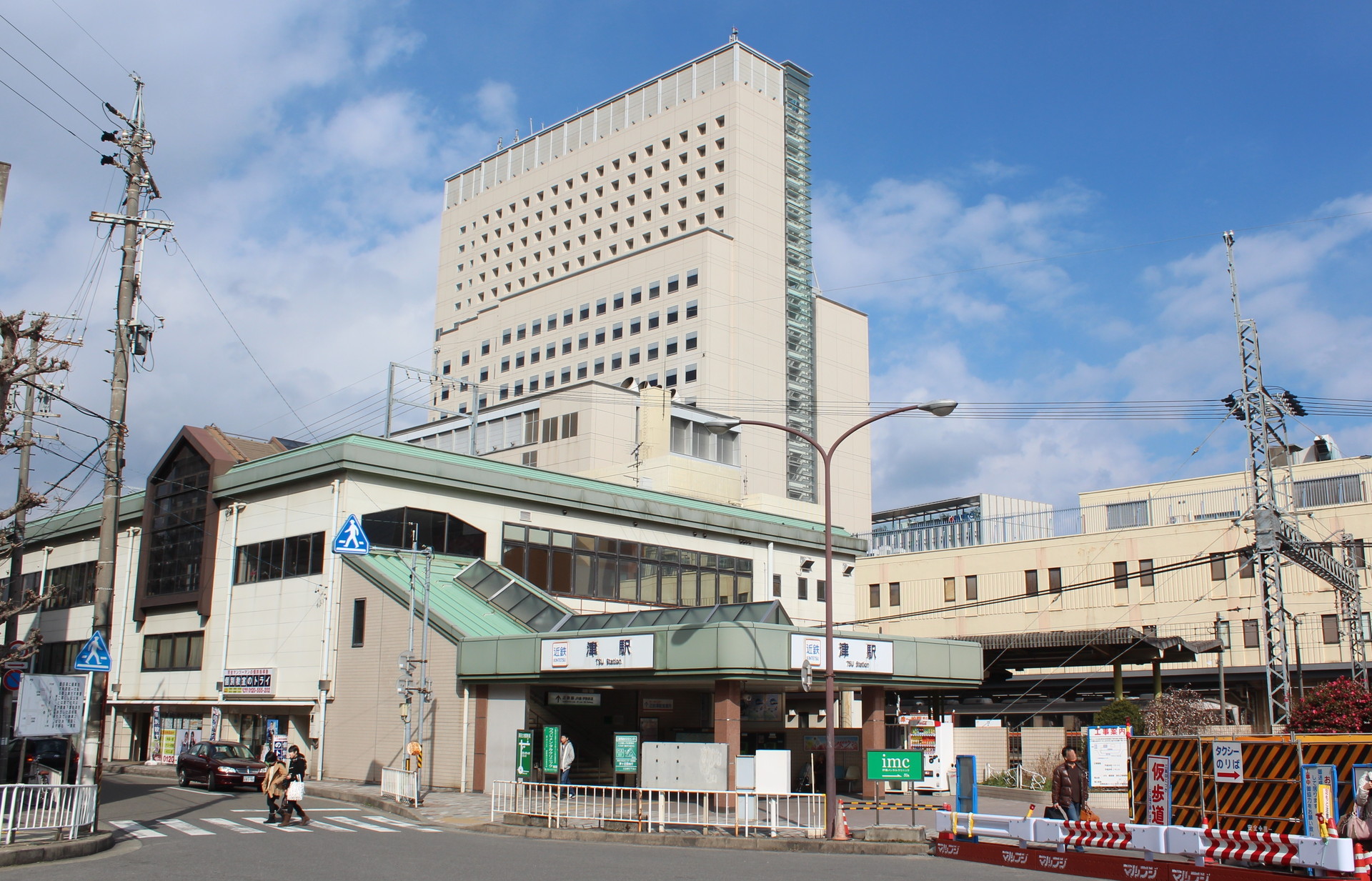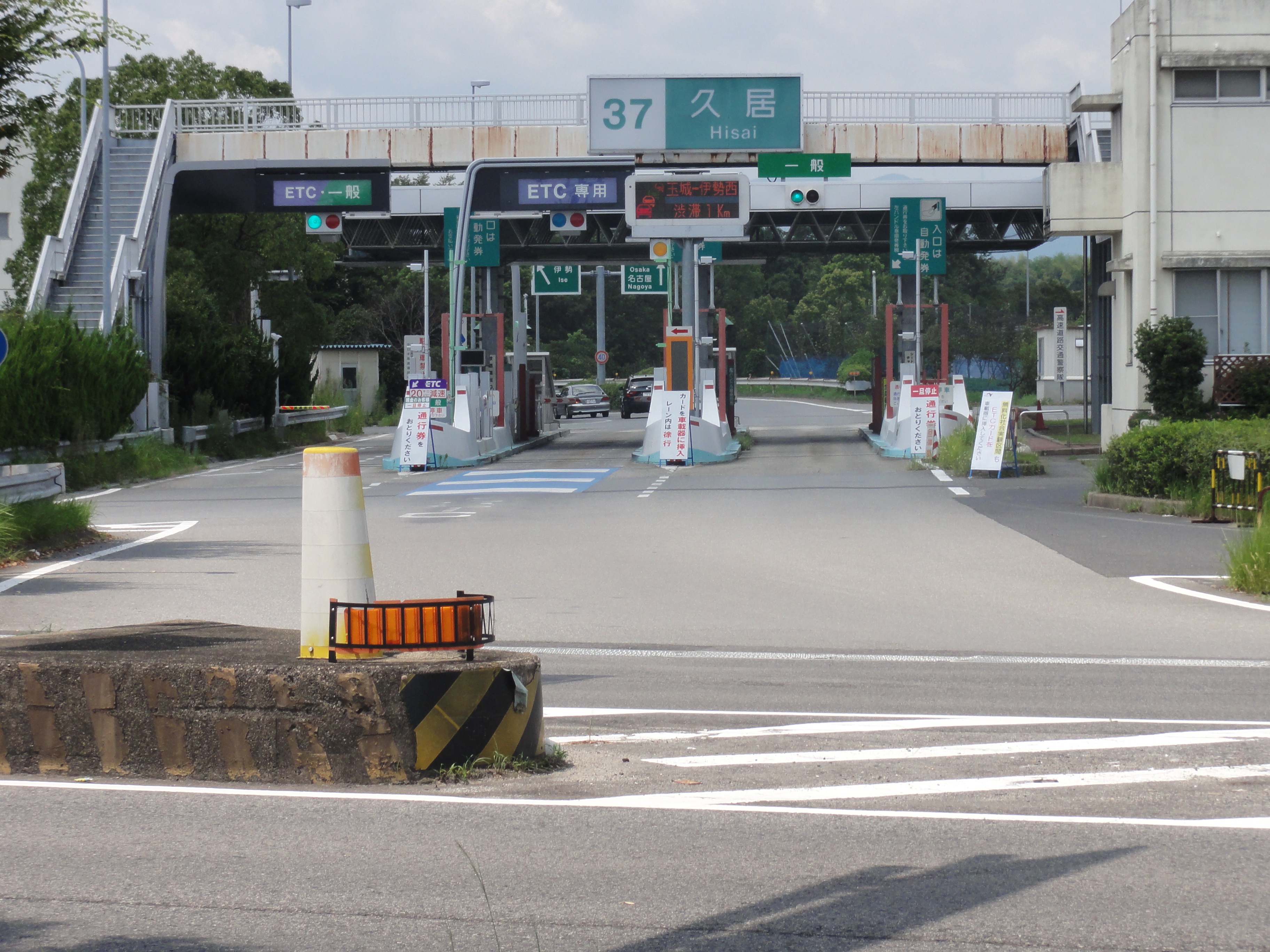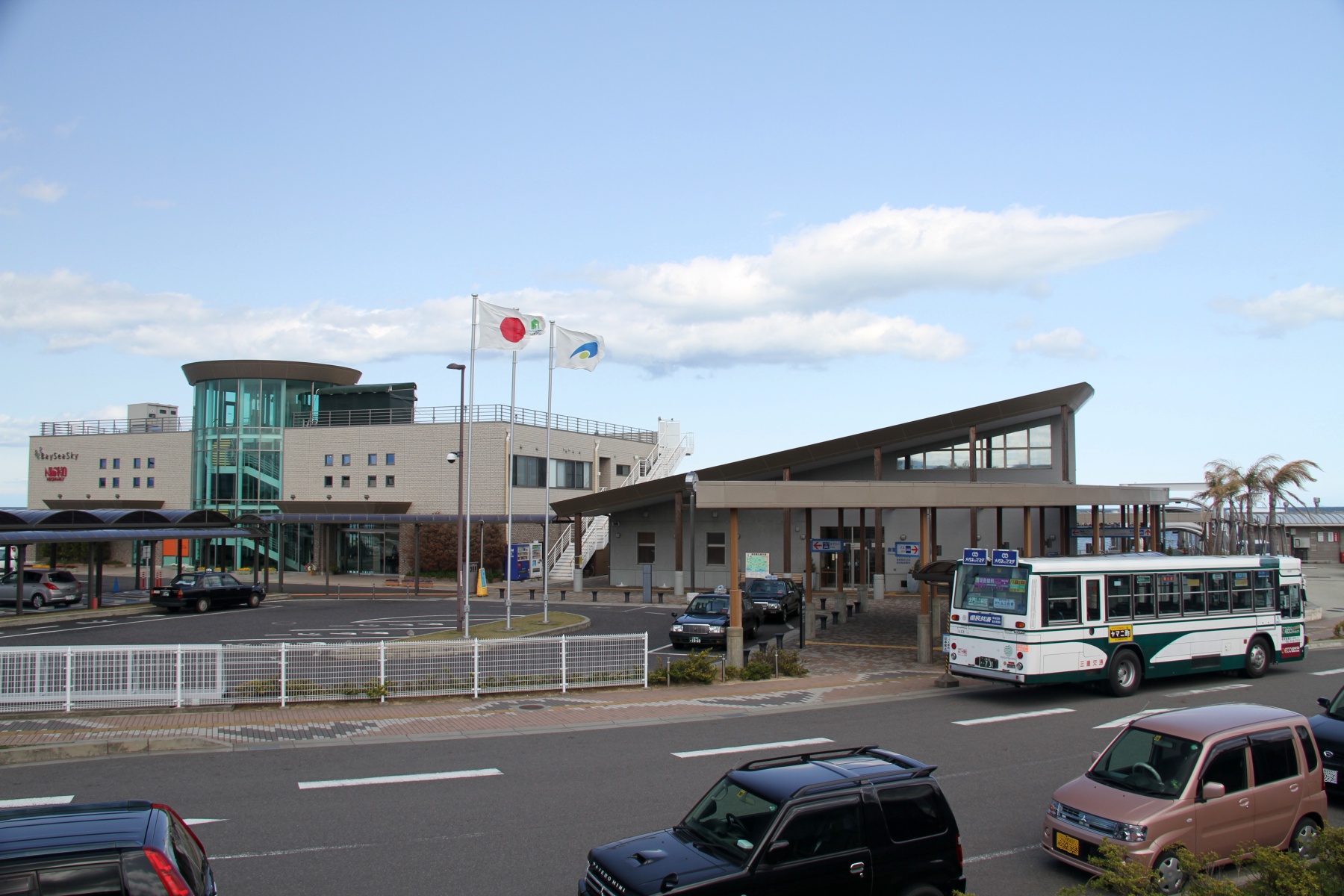Tsu, Mie on:
[Wikipedia]
[Google]
[Amazon]



 is a
is a
File:Kitabatake Akiyoshi.jpg, Kitabatake Akiyoshi
File:北畠氏館跡庭園.jpg, Kitabatake Family Residence Gardens(
File:藤堂高虎像/津城 - panoramio.jpg,
File:Tsu Shinsekai before 1945.jpg, Tsu Shinsekai before 1945
On January 1, 2006, the neighboring city of Hisai, the towns of Anō, Geinō and Kawage, and the village of Misato (all in Age District), the towns of Hakusan, Ichishi and




 is a
is a city
A city is a human settlement of notable size.Goodall, B. (1987) ''The Penguin Dictionary of Human Geography''. London: Penguin.Kuper, A. and Kuper, J., eds (1996) ''The Social Science Encyclopedia''. 2nd edition. London: Routledge. It can be def ...
located in Mie Prefecture
is a prefecture of Japan located in the Kansai region of Honshu. Mie Prefecture has a population of 1,781,948 () and has a geographic area of . Mie Prefecture is bordered by Gifu Prefecture to the north, Shiga Prefecture and Kyoto Prefecture to ...
, Japan. , the city had an estimated population
Population typically refers to the number of people in a single area, whether it be a city or town, region, country, continent, or the world. Governments typically quantify the size of the resident population within their jurisdiction using a ...
of 274,879 in 127,273 households and a population density
Population density (in agriculture: standing stock or plant density) is a measurement of population per unit land area. It is mostly applied to humans, but sometimes to other living organisms too. It is a key geographical term.Matt RosenberPopul ...
of 390 persons per km². The total area of the city is . Although the second largest city in the prefecture in terms of population, its designation as the prefectural capital and its holding of a large concentration of national government offices and educational facilities make the city the administrative and educational center of Mie Prefecture.
Geography
Tsu is located in east-centralKii Peninsula
The is the largest peninsula on the island of Honshū in Japan. It is named after the ancient Kii Province.
Overview
The area south of the “ Central Tectonic Line” is called , and is home to reef-like coral communities which are amongst ...
, in central Mie Prefecture. It is the largest city in Mie Prefecture in terms of area and stretches the width of Mie Prefecture, and is bordered by Ise Bay
is a bay located at the mouth of the Kiso Three Rivers between Mie and Aichi Prefectures in Japan. Ise Bay has an average depth of and a maximum depth of . The mouth of the bay is and is connected to the smaller Mikawa Bay by two channels: th ...
on the Pacific Ocean
The Pacific Ocean is the largest and deepest of Earth's five oceanic divisions. It extends from the Arctic Ocean in the north to the Southern Ocean (or, depending on definition, to Antarctica) in the south, and is bounded by the continen ...
to the east, and Nara Prefecture
is a prefecture of Japan located in the Kansai region of Honshu. Nara Prefecture has a population of 1,321,805 and has a geographic area of . Nara Prefecture borders Kyoto Prefecture to the north, Osaka Prefecture to the northwest, Wakayama P ...
to the west. Parts of the city are within the limits of the Murō-Akame-Aoyama Quasi-National Park
is a Quasi-National Park in Mie and Nara Prefectures, Japan. It was established in 1970.
Places of interest
* Mie: , , ,
* Nara: Mount Takami, , , Murō-ji, Ōno-ji
Related municipalities
* Mie: Iga, Matsusaka, Nabari, Tsu
* Nara: Hig ...
.
Neighboring municipalities
* The city of Suzuka, to the north * The city of Kameyama, to the north * The city ofMatsusaka
is a city located in Mie Prefecture, Japan. , the city had an estimated population of 157,235 in 66,018 households and a population density of 250 persons per km². The total area of the city is . The city is famous for Matsusaka beef.
Geography ...
, to the south
* The city of Iga, to the west
* The city of Nabari to the west
* The village of Soni, Nara
is a village located in Uda District, Nara Prefecture, Japan.
As of April 2017, the village has an estimated population of 1,528 and a density of 32 persons per km2. The total area is 47.84 km2.
Geography
The village of Soni is located ...
to the west
* The village of Mitsue, Nara
is a village located in Uda District, Nara Prefecture, Japan.
As of October 2016, the village has an estimated population of 1,696 and a density of 21 persons per km². The total area is 79.63 km². The primary industry in the village was ...
to the west
Climate
Tsu has aHumid subtropical climate
A humid subtropical climate is a zone of climate characterized by hot and humid summers, and cool to mild winters. These climates normally lie on the southeast side of all continents (except Antarctica), generally between latitudes 25° and 40° ...
(Köppen ''Cfa'') characterized by warm summers and cool winters with light to no snowfall. The average annual temperature in Tsu is 15.6 °C. The average annual rainfall is 1931 mm with September as the wettest month. The temperatures are highest on average in August, at around 26.7 °C, and lowest in January, at around 5.0 °C. Precipitation is significant throughout the year, but is heaviest from May to September.
Demographics
Per Japanese census data, the population of Tsu has been relatively stable over the past 40 years.History
Origin
Tsu originally developed as a port town known as in theNara
The National Archives and Records Administration (NARA) is an " independent federal agency of the United States government within the executive branch", charged with the preservation and documentation of government and historical records. It i ...
and Heian period
The is the last division of classical Japanese history, running from 794 to 1185. It followed the Nara period, beginning when the 50th emperor, Emperor Kanmu, moved the capital of Japan to Heian-kyō (modern Kyoto). means "peace" in Japanese. ...
s.
The port was destroyed by a tsunami
A tsunami ( ; from ja, 津波, lit=harbour wave, ) is a series of waves in a water body caused by the displacement of a large volume of water, generally in an ocean or a large lake. Earthquakes, volcanic eruptions and other underwater explo ...
in the 1498 Meiō Nankaidō earthquake.
Kitabatake Shrine
is a Shinto shrine located in the Misugi neighborhood of the city of Tsu, Mie Prefecture, Japan. It is one of the Fifteen Shrines of the Kenmu Restoration. The main ''kami'' enshrined is the deified spirit of the imperial loyalist Kitabatake ...
)
Edo Period
The town was rebuilt as acastle town
A castle town is a settlement built adjacent to or surrounding a castle. Castle towns were common in Medieval Europe. Some examples include small towns like Alnwick and Arundel, which are still dominated by their castles. In Western Europe, ...
and a post station by the Tōdō clan
The was a Japanese samurai clan of humble origins from the Inukami District of Ōmi Province. Under Hideyoshi, Tōdō ruled Uwajima at Iyo province. During the Edo period, the Tōdō ruled most of Ise Province and all of Iga Province as ''daim ...
, ''daimyō
were powerful Japanese magnates, feudal lords who, from the 10th century to the early Meiji era, Meiji period in the middle 19th century, ruled most of Japan from their vast, hereditary land holdings. They were subordinate to the shogun and n ...
'' of Tsu Domain
was a feudal domain under the Tokugawa shogunate of Edo period Japan, located in Ise Province and in Iga Province in what is part of now modern-day Tsu, Mie. It was centered around Tsu Castle. Tsu Domain was controlled the '' tozama'' Tōdō cla ...
under the Tokugawa shogunate
The Tokugawa shogunate (, Japanese 徳川幕府 ''Tokugawa bakufu''), also known as the , was the military government of Japan during the Edo period from 1603 to 1868. Nussbaum, Louis-Frédéric. (2005)"''Tokugawa-jidai''"in ''Japan Encyclopedia ...
. During the Edo period
The or is the period between 1603 and 1867 in the history of Japan, when Japan was under the rule of the Tokugawa shogunate and the country's 300 regional '' daimyo''. Emerging from the chaos of the Sengoku period, the Edo period was characteriz ...
, it became a popular stopping point for travelers to Ise Grand Shrine
The , located in Ise, Mie Prefecture of Japan, is a Shinto shrine dedicated to the sun goddess Amaterasu. Officially known simply as , Ise Jingū is a shrine complex composed of many Shinto shrines centered on two main shrines, and .
The Inn ...
, about 40 km to the southeast.
Tōdō Takatora
was a Japanese ''daimyō'' of Tōdō clan from the Azuchi–Momoyama to Edo periods. He rose from relatively humble origins as an ashigaru (a light foot soldier) to become a ''daimyō''.
Biography
During his lifetime he changed his feudal ...
File:Marunouchi, Tsu, Mie Prefecture 514-0033, Japan - panoramio (1).jpg, Tsu Castle
was a Japanese castle located in the city of Tsu, Mie Prefecture, Japan. During the Edo period, Tsu Castle was home to the Sudo clan, ''daimyō'' of Tsu Domain, who dominated the provinces of Ise and Iga under the Tokugawa shogunate. The cas ...
File:Tage Jōka Ezu.png, This is a map of Tage castle or Kiriyama castle in Edo period.
Modern Tsu
Following theMeiji Restoration
The , referred to at the time as the , and also known as the Meiji Renovation, Revolution, Regeneration, Reform, or Renewal, was a political event that restored practical imperial rule to Japan in 1868 under Emperor Meiji. Although there were ...
, Tsu became the capital of Mie Prefecture in 1871. With the establishment of then modern municipalities on April 1, 1889, Tsu was one of the original 31 cities to be proclaimed. The city borders gradually expanded, with Tsu annexing the neighboring villages of Tatebe and Tosa in 1909, Shinmachi in 1934, Fujimi in 1936, Takachaya in 1939 and Anto, Kanbe and Kushigata in 1943. During World War II
World War II or the Second World War, often abbreviated as WWII or WW2, was a world war that lasted from 1939 to 1945. It involved the vast majority of the world's countries—including all of the great powers—forming two opposin ...
, Allied air raids on July 24 and July 28, 1945, destroyed most of the city and killed 1,239 people. In 1953, Tsu annexed the neighboring villages of Kumozu in 1953, Isshinden, Shiratsuka, Kurima, and Katada in 1954 and Toyosato in 1973.
Karasu
Karasu, Kara-su, Kara su, Qarasu or Gharasu (lit. 'black water/river' in Turkic languages) may refer to:
Rivers
The Balkans
* A former name of the Struma River (Struma Karasu) in Bulgaria and Thrace, northern Greece
* A former name of the Mest ...
, and the village of Misugi (all in Ichishi District
was a district located in Mie Prefecture, Japan.
As of 2003, the district had an estimated population of 70,117 and a density of 150.14 persons per km2. The total area was 467.00 km2.
Until the day before the dissolution on December 31, 20 ...
) were merged into Tsu. As a result of the merger, the city became the second largest in Mie by population behind Yokkaichi
is a city located in Mie Prefecture, Japan. , the city had an estimated population of 310,259 in 142162 households and a population density of 1500 persons per km². The total area of the city is .
Geography
Yokkaichi is located in north-central ...
, and the largest in Mie by area ahead of Matsusaka
is a city located in Mie Prefecture, Japan. , the city had an estimated population of 157,235 in 66,018 households and a population density of 250 persons per km². The total area of the city is . The city is famous for Matsusaka beef.
Geography ...
.
Government
Tsu has a mayor-council form of government with a directly elected mayor and aunicameral
Unicameralism (from ''uni''- "one" + Latin ''camera'' "chamber") is a type of legislature, which consists of one house or assembly, that legislates and votes as one.
Unicameral legislatures exist when there is no widely perceived need for multic ...
city council of 34 members. Tsu contributes seven members to the Mie Prefectural Assembly. In terms of national politics, the city is part of Mie 1st district of the lower house
A lower house is one of two Debate chamber, chambers of a Bicameralism, bicameral legislature, the other chamber being the upper house. Despite its official position "below" the upper house, in many legislatures worldwide, the lower house has co ...
of the Diet of Japan
The is the national legislature of Japan. It is composed of a lower house, called the House of Representatives (, ''Shūgiin''), and an upper house, the House of Councillors (, '' Sangiin''). Both houses are directly elected under a paralle ...
.
Economy

Imuraya Confectionery
() is a Japanese confectionery company selling azuki bean products. Its headquarters are in Tsu, Mie, Tsu, Mie Prefecture.ZTV, a cable television operator, are headquartered in Tsu.



 JR Tōkai –
JR Tōkai –  JR Tōkai –
JR Tōkai –
Education
Colleges and universities
*Mie University
Mie University (三重大学; ''Mie Daigaku'', abbreviated to 三重大 ''Miedai'') is a national university in Tsu, Mie Prefecture, Japan. As with other national universities, Mie University has been a National University Corporation since Apr ...
, the prefecture's only national university
A national university is mainly a university created or managed by a government, but which may also at the same time operate autonomously without direct control by the state.
Some national universities are associated with national cultural or po ...
.
* Tsu City College
* Mie Prefectural College of Nursing
* Takada Junior College
Primary and secondary education
*Tsu has 48 public elementary schools and 19 public middle schools operated by the city government, one public elementary school and one public middle schools affiliated with Mie University and two private middle schools. The city has nine public operated by the Mie Prefectural Board of Education and three private high schools *The prefecture also operates six special education schools for the disabled.Transportation


Railway
Kisei Main Line
The is a railway line that parallels the coastline of the Kii Peninsula in Japan between Mie Prefecture and Wakayama Prefecture. The name takes the ''kanji'' characters from the names of the old provinces of and .
The line is operated by Ce ...
* - - -
Meishō Line
The is a rural, regional railway line of Central Japan Railway Company (JR Central) in Mie Prefecture, Japan, connecting Matsusaka station in Matsusaka and Ise-Okitsu station in Tsu.
The line takes its name from the kanji characters of the c ...
* - - - – - - - - - - -
20px Kintetsu Railway
, referred to as , is a Japanese passenger railway company, managing infrastructure and operating passenger train service. Its railway system is the largest in Japan, excluding Japan Railways Group. The railway network connects Osaka, Nara, Kyot ...
- Nagoya Line
* - - - - - - - - -
20px Kintetsu Railway
, referred to as , is a Japanese passenger railway company, managing infrastructure and operating passenger train service. Its railway system is the largest in Japan, excluding Japan Railways Group. The railway network connects Osaka, Nara, Kyot ...
-Osaka Line
is a designated city in the Kansai region of Honshu in Japan. It is the capital of and most populous city in Osaka Prefecture, and the third most populous city in Japan, following Special wards of Tokyo and Yokohama. With a population of 2.7 ...
* - - - -
Ise Railway - Ise Railway Ise Line
The is a Japanese railway line in Mie Prefecture, between Kawarada Station, Yokkaichi and Tsu Station, Tsu. This is the only railway line operates. The company name is abbreviated to . The third sector company took the former Japanese Nationa ...
* – – -
Highway
Expressway
* 24px, link=, alt=E23 Ise ExpresswayJapan National Route
* * * * * * * * ]Sea Ports
* Port of Tsu-MatsusakaSister city relations
* –Higashishirakawa, Gifu
is a village located in Kamo District, Gifu Prefecture, Japan. , the village had an estimated population of 2,278 and a population density of 26 persons per km2, in 842 households. The total area of the village was . Higashishirakawa has been ...
, since June 28, 1989
* – Osasco
Osasco () is a Municipalities of Brazil, municipality in São Paulo State, Brazil, located in the Greater São Paulo and ranking 5th in population among São Paulo municipalities. According to the Brazilian Institute of Geography and Statistics, ...
, São Paulo
São Paulo (, ; Portuguese for 'Saint Paul') is the most populous city in Brazil, and is the capital of the state of São Paulo, the most populous and wealthiest Brazilian state, located in the country's Southeast Region. Listed by the GaWC a ...
, Brazil, since October 18, 1976
* – Zhenjiang
Zhenjiang, alternately romanized as Chinkiang, is a prefecture-level city in Jiangsu Province, China. It lies on the southern bank of the Yangtze River near its intersection with the Grand Canal. It is opposite Yangzhou (to its north) and b ...
, Jiangsu
Jiangsu (; ; pinyin: Jiāngsū, Postal romanization, alternatively romanized as Kiangsu or Chiangsu) is an Eastern China, eastern coastal Provinces of the People's Republic of China, province of the China, People's Republic of China. It is o ...
, China – since June 11, 1984
Local attractions
Tsu is famous for its , a festival commemorating the arrival of theJoseon Tongsinsa
The Joseon Tongsinsa were goodwill missions sent intermittently, at the request of the resident Japanese authority, by Joseon dynasty Korea to Japan. The Korean noun identifies a specific type of diplomatic delegation and its chief envoys. From ...
delegation from Korea during the feudal period. There are two other cities that celebrate Tōjin Odori: Suzuka city in Mie Prefecture and Ushimado-chō in Okayama Prefecture
is a Prefectures of Japan, prefecture of Japan located in the Chūgoku region of Honshu. Okayama Prefecture has a population of 1,906,464 (1 February 2018) and has a geographic area of 7,114 Square kilometre, km2 (2,746 sq mi). Okayama Prefectur ...
.http://www006.upp.so-net.ne.jp/asao/toujin.htm 唐人踊り (Tōjin Odori)
The ruins of Tsu Castle
was a Japanese castle located in the city of Tsu, Mie Prefecture, Japan. During the Edo period, Tsu Castle was home to the Sudo clan, ''daimyō'' of Tsu Domain, who dominated the provinces of Ise and Iga under the Tokugawa shogunate. The cas ...
have been made into a downtown city park.
Kitabatake Shrine
is a Shinto shrine located in the Misugi neighborhood of the city of Tsu, Mie Prefecture, Japan. It is one of the Fifteen Shrines of the Kenmu Restoration. The main ''kami'' enshrined is the deified spirit of the imperial loyalist Kitabatake ...
and Yūki Shrine are notable local Shinto
Shinto () is a religion from Japan. Classified as an East Asian religion by scholars of religion, its practitioners often regard it as Japan's indigenous religion and as a nature religion. Scholars sometimes call its practitioners ''Shintois ...
shrines.
Culture
Sports
Baseball
*Mie Takatora baseball club(JABA)Volleyball
*Veertien Mie( V.League)Notable people
*Sho Gokyu
is a former Japanese football player.
Playing career
Gokyu was born in Tsu on June 11, 1983. After graduating from high school, he joined J2 League club Cerezo Osaka in 2002. Although he could not play at all in the match, Cerezo was promoted ...
, professional soccer player
* Mika Hagi, 2007 Miss Japan
*Mu Kanazaki
is a Japanese professional footballer who plays for J2 League club Oita Trinita. He scored the two goals that gave his team the title of the 2016 J1 League over Urawa Red Diamonds.
Club career
On 25 March 2020, Kanazaki returned to Nagoya Gram ...
, professional soccer player
* Kōji Kitao, sumo wrestler
* Kotokaze Kōki, sumo wrestler
* Ayumi Oka, actress
*Hiroshi Okuda
Hiroshi Okuda (奥田 碩 ''Okuda Hiroshi''; born December 29, 1932 in Mie Prefecture), is the former chairman of the Toyota Motor Corporation from 1999 to 2006.
Overview
He became president of Toyota in 1995 and has worked at the corporati ...
, former president of Toyota Motors
*Edogawa Rampo
, better known by the pen name was a Japanese author and critic who played a major role in the development of Japanese mystery and thriller fiction. Many of his novels involve the detective hero Kogoro Akechi, who in later books was the lea ...
, author
*Kōdō Sawaki
was a prominent Japanese Sōtō Zen teacher of the 20th century. He is considered to be one of the most significant Zen priests of his time for bringing Zen practice into the lives of laypeople and popularizing the ancient tradition of sewing the ...
, Zen Buddhist
*Chikara Sakaguchi
is a Japanese politician who served in the House of Representatives between 1972 and 2012, and as Minister of Health, Labour and Welfare from 2001 to 2004.
Early life
He was born in Mie Prefecture and obtained an MD from Mie University. Aft ...
, politician
* Yuki Hashimoto, politician, former idol
*Hidesaburō Ueno
(January 19, 1872 – May 21, 1925) was a Japanese agricultural scientist, famous in Japan as the guardian of Hachikō, a devoted Akita (dog), Akita dog.
Life and career
Ueno was born on January 19, 1872, in Hisai, Mie, Hisai-shi (present-day Ts ...
, agricultural scientist
*Saori Yoshida
is a Japanese former freestyle wrestler. Starting in 1998 she won almost every major competition, including three Olympic Games, four Asian Games, and 13 world championships, and became the most decorated athlete in freestyle wrestling history. ...
, Olympic wrestler
*Yoshihito Nishioka
is a Japanese tennis player. He has won two ATP Tour singles titles and achieved a career-high ATP singles ranking of world No. 36 on 7 November 2022.
He is currently the No. 1 Japanese player.
Career
Junior career
As a junior, he compiled a ...
, professional tennis player
References
External links
* * {{Authority control Cities in Mie Prefecture Populated coastal places in Japan Port settlements in Japan